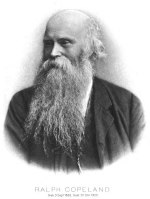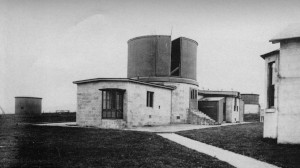
Welcome to Peredur Williams's home page
| Research on Wolf-Rayet stars, especially members of colliding-wind binaries, and their carbon dust formation X-ray and non-thermal radio emission — such as the prototype WR 140, the long-period system WR 48a, and the maverick Apep. |
 |
| phase | Orbital phenomenon | f | r/a | P.A. | ψ | MJD | Year | Date |
| 0.9556 | conjunction: WC star behind | 223 | 0.57 | 84 | 29 | 60506 | 2024.54 | July 17 |
| 0.9966 | quadrature | 313 | 0.12 | 354 | 90 | 60626 | 2024.86 | Nov 12 |
| 0.000 | periastron passage | 0 | 0.10 | 327 | 121 | 60636 | 2024.90 | Nov 22 |
| 0.0030 | conjunction: O star behind | 42 | 0.12 | 264 | 151 | 60645 | 2024.91 | Dec 1 |
| 0.0359 | quadrature | 133 | 0.49 | 174 | 90 | 60740 | 2025.18 | Mar 6 |
 |
I am studying the third Astronomer Royal for Scotland, Ralph Copeland (1837-1905) and have published a biography in The Antiquarian Astronomer, 17, 28, 2023. He lived an adventurous early life, leaving England to join the Australian gold rush when he was 15 and then worked on a sheep farm. He returned to Britain, worked as a locomotive engineer and then went to the University of Göttingen, where he gained a PhD. He participated in the Second German North Polar expedition, working on a preliminary geodetic survey, and adding to the food supply with his rifle. On his return, he took positions in Ireland, first at Lord Rosse's observatory at Birr Castle and then at Dunsink. From 1876-1888, he worked at Lord Crawford's observatory at Dun Echt, Aberdeenshire, where he made extensive observations of comets and novae. He also made an expedition to study observing conditions in South America, making observations at Puno on Lake Titicaca and at Vincocaya (elev. 14,360 ft), documenting the conditions at high elevation and discovering a number of Wolf-Rayet stars from their spectacular spectra. In 1889, he was appointed Astronomer Royal for Scotland in succession to Charles Piazzi Smyth and played a major part in establishing the (new) Royal Observatory Edinburgh on Blackford Hill. He arranged for the motto below, NEC FASCES, NEC OPES, SOLA ARTIS SCEPTRA PERENNANT (only scientific achievements endure, not power nor wealth), with AD 1894 partly visible behind, to be engraved above the door of the Astronomer Royal's residence on the site. |

| Letters from Dun Echt: a networked observatory: The Archives of the ROE preserve the outgoing letters of the private observatory (left) established by Lord Lindsay (who became 26th Earl of Crawford from 1880) at Dun Echt, providing a detailed picture of its development and operation during its twenty-year (1872-1892) existence. Nearly all were written by the two astronomers in charge, David Gill until mid-1876 followed by Ralph Copeland until the observatory merged with the ROE following Lord Crawford's benefaction. A survey (The Observatory, 144, 54, 2024) looks primarily at Gill's and Copeland's communications with other astronomers, both professional and amateur, to consider how the apparently isolated observatory extended its connections with the astronomical world. |
 |
Institute for Astronomy
Royal Observatory Blackford Hill Edinburgh EH9 3HJ United Kingdom |
Contact:
email: pmw [at] roe.ac.uk |